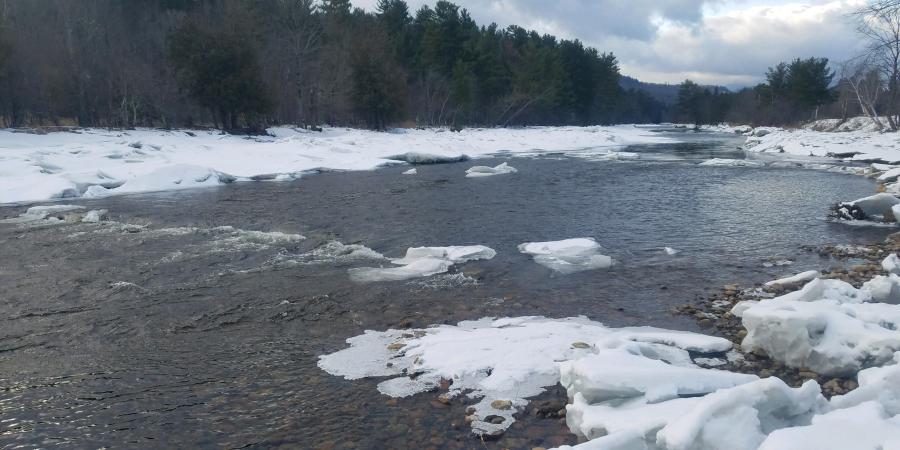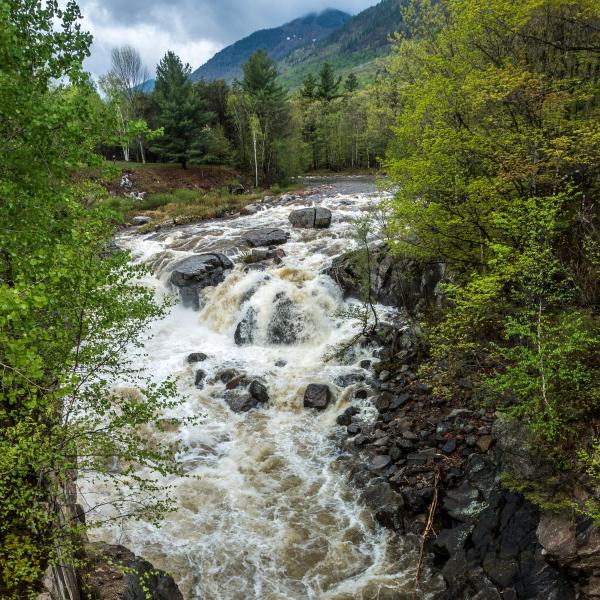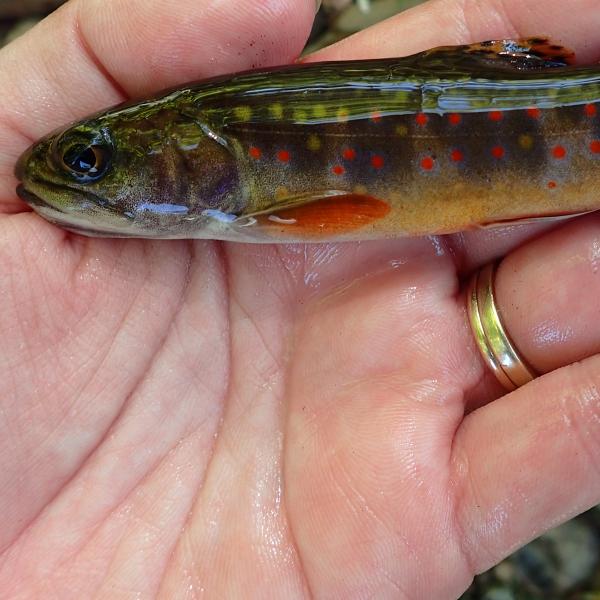To survive through a northern winter in a frozen stream or lake, trout metabolism decreases, enabling them to survive longer between meals. Trout and other stream fish move to areas of better winter habitat, including deep pools and areas with stable ice conditions and slow currents.
Where do trout go in the winter?
Deep pools and long runs with slower velocities and the ability to escape from predators become essential for fish in winter. Having access to a mix of habitat features including pools, areas where ice conditions are stable, and areas of slow current, will lead to the best winter survival rates for trout and other fish. Unlike winter in lakes and ponds, currents are a challenge for fish trying to find stable winter habitats. In the fall, after spawning, trout stop defending feeding positions and move short or long distances to seek winter refuge habitat. Most often, they move downstream to quiet, slow waters.
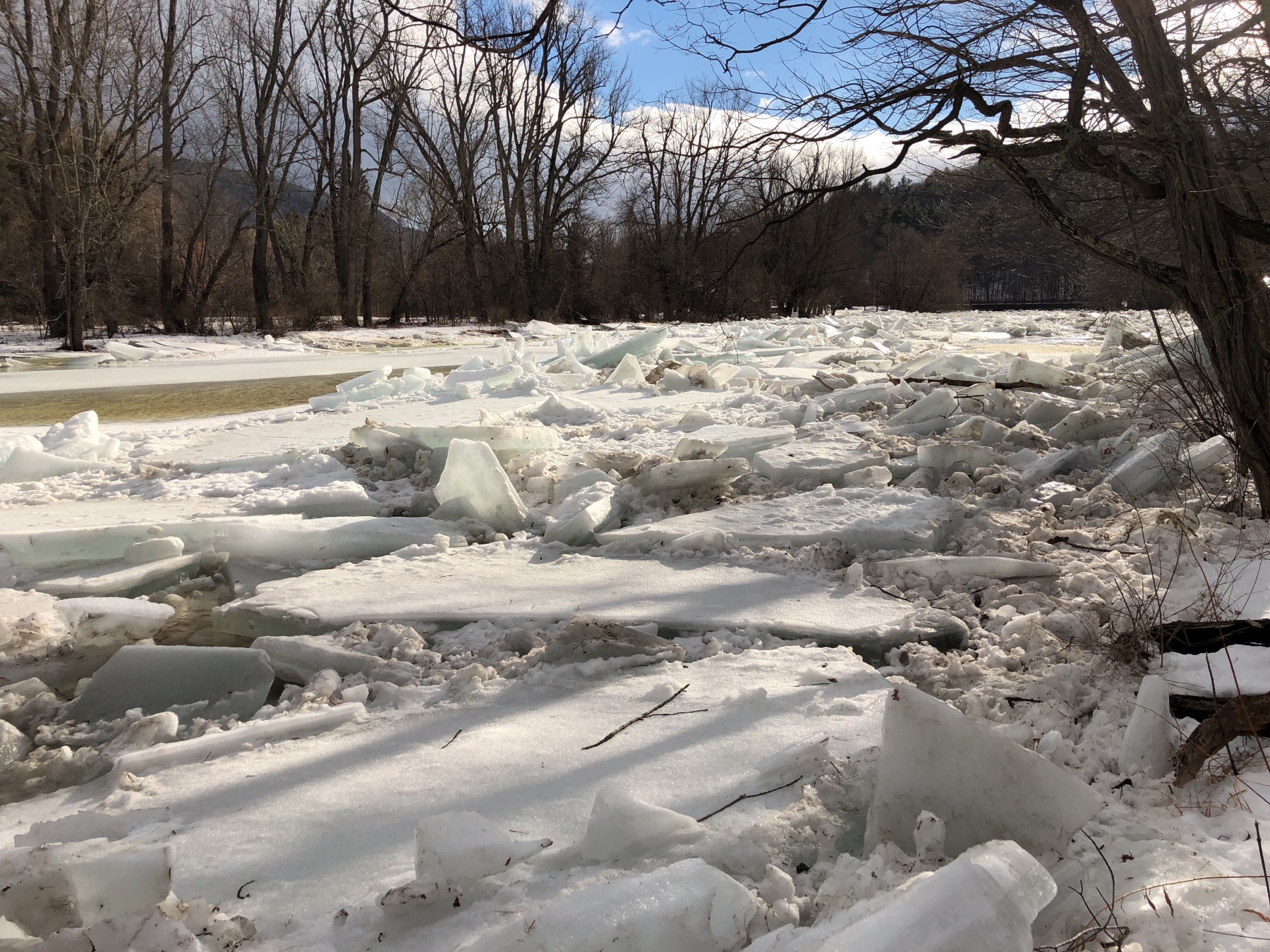
The buildup of frazil ice causes stationary ice, which can make for unstable winter habitats for fish when it breaks up.
From there, strategies can vary greatly. Large fish might school or aggregate in winter. Smaller fish may become nocturnal and move a lot. Or they might simply find and occupy a single rock crevice for the entire winter. In deep water and underneath stationary ice, fish are more active during the day. Stable fish habitat is created where ice blankets the river in early winter and stays until spring. Less secure habitats for fish are areas with patchy snow and ice floes because temperatures swing to extremes and more ice formation occurs here. Beaver ponds can offer excellent winter habitat for trout.

Trout and other stream fish prefer to spend winter in habitats with large deep pools and boulders and survive well under stationary ice.
Groundwater inputs provide access to warm water and can support aggregations of larger fish. Backwaters and side channels are important for escaping surface ice, underwater ice dams, and anchor ice. Other fish move upstream into snow-blanketed tributary streams. Regardless of whether fish seek upstream or downstream habitats, areas with pools, woody debris, submerged vegetation, and root structures on streambanks offer great protection from ice and predators.
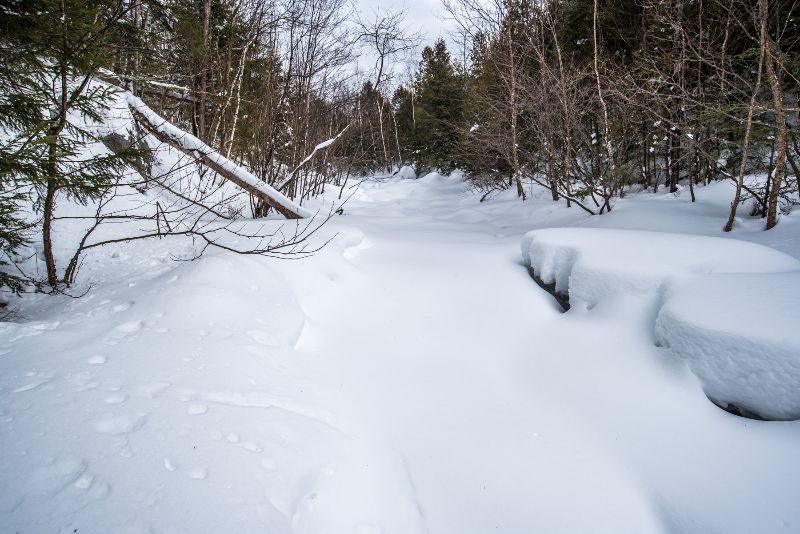
Many Ausable tributary streams get blanketed with an insulating layer of snow. Water flows freely underneath and offers safe spaces for many trout.
Fluctuating weather, as we’ve seen this winter, causes dynamic ice formations and creates constantly changing habitats. Things get tough when stationary ice forms and melts at frequent intervals leading to ice jams, causing direct mortality or forcing fish to move out in a hurry. They can be blocked from entire pools or reaches by underwater ice that we can’t readily see. Anchor ice can break up and move after a cold night. When this happens, lots of gravel, sediment, and aquatic insects are transported downstream. This can also lead to opportunities for fish to move around and access better habitat. When forced to move and find new habitat in these unstable reaches, fish expend lots of energy and have an increased risk of mortality.
Support our biodiverse habitats work for wildlife and their aquatic and near-stream habitats. Give with confidence today!
What do trout eat in winter?
Fish metabolism slows because of cooling water temperatures, and since food availability is greatly reduced in winter, this is an effective survival mechanism. With lower production of stream invertebrates, many trout shift to eating drifting insects. The goal is to expend minimal energy to catch their food. On warm days, there can be hatches of midges and small mayflies. Food takes longer to digest, and so food lasts longer. In winter, growth almost completely ceases, as fish enter survival mode. When spring finally arrives and when ice and snow melt away, trout start to move upstream to feed during runoff.
Do trout die in the winter?
Yes, many fish die of starvation and stress-induced mortality. By decreasing their metabolism, trout survive longer without food. But when the food is gone, fish tap into fat and protein stores. Mortality from starvation is more likely for smaller and younger fish because they have less time to build energy stores. Fall spawning expends a lot of energy leading into winter.
Not all winter mortality is caused by starvation; fish can also die from stress. Because they are slower moving, there are fewer chances of escaping from predators or quick-changing ice and flow conditions.
Challenges to fish in local rivers and streams
New weather patterns, resulting from climate change and natural fluctuations, have led to changes in flow, discharge, and ice formation in the Ausable. This results in areas of stable and unstable habitats through the winter season. In areas where ice formation changes quickly, fish can quickly be cut off from accessing different habitats. Sedimentation can also decrease fish habitat quality and quantity by filling in the spaces between gravel and cobble streambeds where juvenile fish hide. As long as trout and other fish continue to be able to access a mix of habitat features, their chances of survival are greatly increased. Providing habitat complexity and diversity while restoring form and function to the river channel is a primary goal of our restoration work at the Ausable River Association. We hope to build better winter habitats for fish as we build stream health and flood resilience.
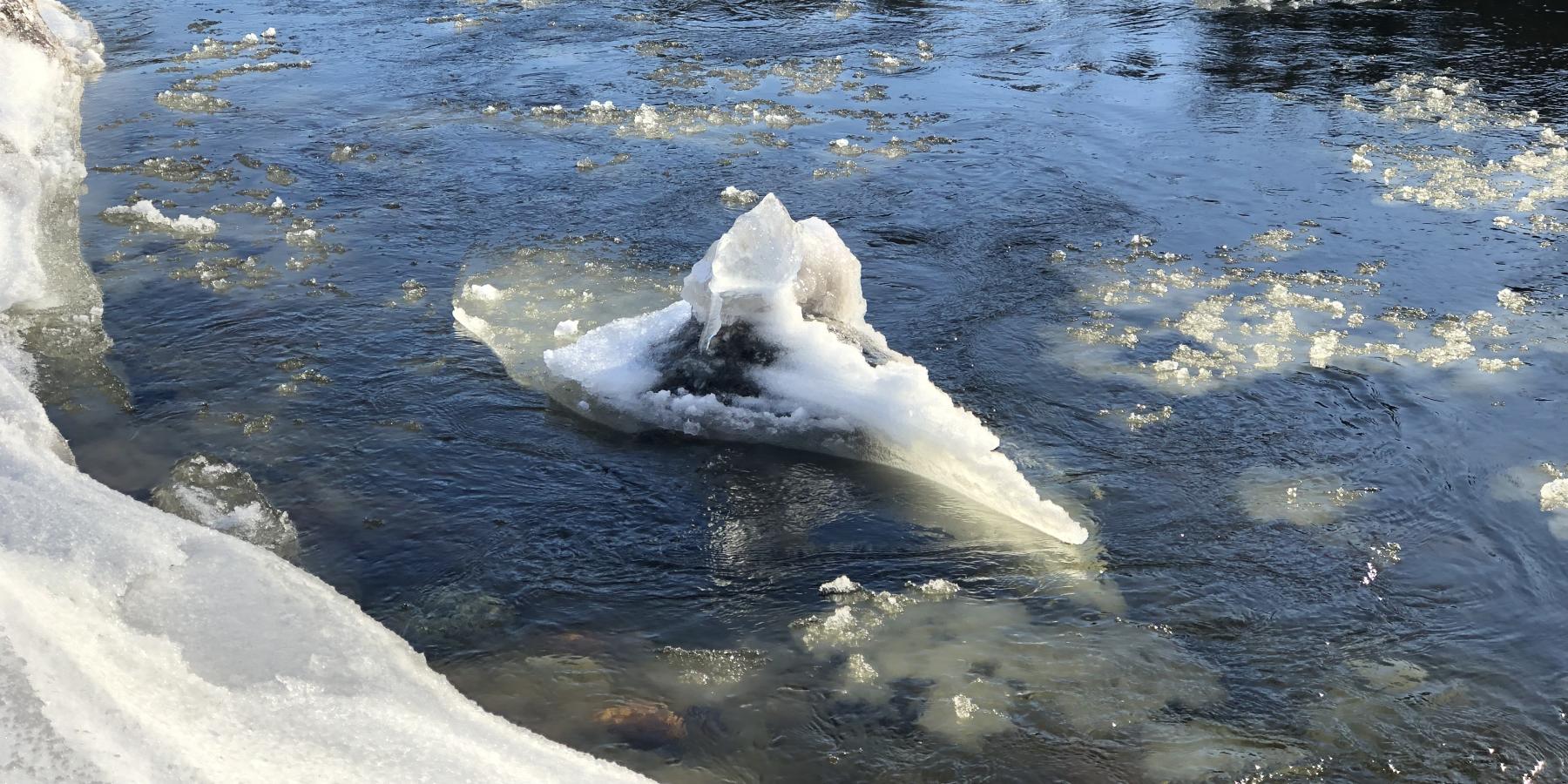
Floating frazil ice moves swiftly through areas of strong currents, and can later sink to the bottom and form anchor ice.
Story and photos by Carrianne Pershyn, Biodiversity Research Manager.
Sign-up for our e-newsletter to get weekly updates on the latest stories from the Ausable River Association.
